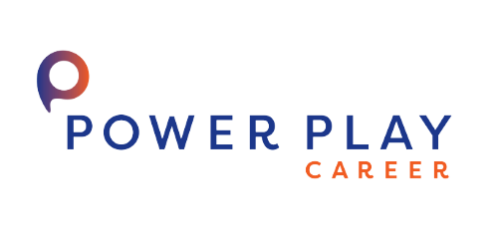
We are now in the second quarter of 2023, which in calendar months it’s also Spring! I’ve been adopting quarterly planning and goal setting instead of yearly. I have also found many benefits in coaching my clients to plan quarterly. Quarterly planning is for more than businesses. You can apply it to anything, including your job search or career development.
I used to start January excited with my list of things I wanted to accomplish by December and then forget about it, so by mid-year, I was all over the place. Then, when I ended up in December and still needed to meet most of my goals, I started January feeling hopeful, following the pros who said to set goals! Lather, rinse, repeat! However, I needed a more progressive routine. So I had to find another way. I feel, at times, I have a minor case of attention deficit hyperactivity disorder (ADHD). I came to that conclusion when I worked with a client diagnosed with ADHD.

I thought ADHD was a disorder in children. However, more and more, it seems adults also have it. Some studies say it’s genetic and tends to run in families. One of the most common ways professionals diagnose adults with ADHD is when they sit in on their children’s evaluations and realize they have the same symptoms. So are we seeing increased recognition or overdiagnosis? Is it because the frequency of ADHD has grown over the years? I will leave you to contemplate these questions at this point, as I am no expert in the field.
I mention ADHD since, by definition, it is about being challenged to pay attention, experiencing hyperactivity, and exhibiting impulsive behaviour. In that regard, I sometimes check all these boxes, being easily distracted, getting excited about a shiny object, or signing up for something completely unrelated to my goals.
Then I discovered quarterly planning.
As noted earlier, I used to set a vision in January of what I would like to accomplish by December. However, now I break the year into three-month chunks, which helps me focus on what matters and define my monthly and weekly steps. Three months doesn’t seem as long as the entire year, so I stay interested and engaged in my goals and work.
For a business, a quarter is a three-month period within twelve months during which a company can reflect on successes and failures and prepare for the future. So how do we apply this approach to your job search? On average, it can take about three to six months to get a job, and if done correctly with the right tools, strategies, and planning, it can take three months or less. So wouldn’t it make sense to plan out three months at a time for your job search?
What is a quarterly plan for job search?
You can create a quarterly plan for the next three months for your job search. Your first month does not have to be a calendar month. As an individual, you can define your next three months whenever you want and need to begin. For example, you or your employer might end your position, and you are ready to plan your next career move.

Start where you are and map out your next three months in a Word document, a Google sheet, or pages in your journal. This document initially reflects the previous three months (or quarters). Did you reach goals or milestones? Did you get laid off? Were the prior three months challenging, and did you want to change jobs or careers? Reflect and document what happened in the last three months and clarify what you will focus on in your next three months. Rather than leaving it open, thinking that you can do anything, be specific so it will be easier to plan your quarter.
As an example of being too open, my client Jessica, a brilliant young woman with many excellent skills, approached her job search in desperation. In our first session, she said proudly (while feeling depleted and discouraged) that she had applied to almost 40 jobs a week for everything and anything. I was not surprised when she said she had yet to receive one interview. She couldn’t understand why. While she had no strategy, she also wanted to find a job as soon as possible. She was throwing spaghetti at the wall to see if it would stick. And none did.
Once she was on board with less than more, we created a three-month plan.
Jessica’s goal in three months: Find a job as a Business Analyst. It was hard for her to decide on just one role because she felt she could apply for many positions like project manager, project coordinator, data analyst, and so on. I assured her we could change the title and have a Number 1, 2, or 3 choice. The resumés of 2023 have to tell a story. You must carefully tailor them to pass the ATS or Recruiter’s screening. A one-resumé-fits-all type is no longer effective. I then told her to apply to only five jobs a week. When she gasped, I felt like I was dealing with someone with an addiction who starts to sweat at the thought of not getting their fix. “What do you have to lose?” I asked her. She agreed her way was not working.
Then we looked at the three months as follows:
Month 1 – update brand, stories, and inventories and use templates to apply for jobs.
Month 2 – reflect on month 1, informational interviewing (joanne insert link) in job search, meeting recruiters, and following up.
Month 3 – reflect on month 2, and prepare for interviews with the value proposition and STAR stories (joanne insert link).
Then, from this data, we planned her first week. I hear people say that finding a job is a full-time job. That can be depressing, and you can burn out from looking for a job all day. A better strategy is to schedule 20 hours of job search if you are without work, a few hours for 1:1 networking, and some self-care like spending time with family and friends and going for walks.
 Here’s what we planned for her first week:
Here’s what we planned for her first week:
1. Look for ONLY three-five postings for a Business Analyst that would meet most of the requirements.
2. Before updating the resumé, create a list or inventory of all your skills in one document.
3. Craft stories of examples and accomplishments for some of the requirements of the postings. Create a document for these items.
4. Update the resumé for the first posting with a unique value proposition (professional summary).
5. Write a cover letter for each job posting.
It could take a little longer, or three postings might be enough. However, once you get into a rhythm and have your inventories of skills and accomplishments on a separate document, you can choose the perfect item to tailor your resumé. So in week 2, you can now apply to five postings. In weeks 3 and 4, you will need to add following up to your tasks. Then in week 5 (second month), you start looking at informational interviewing. And so on.
She reached her goal!
I’m happy to report that Jessica was invited to more than one interview; she was invited to three! And then she had to decide between two offers. She was delighted, and I was impressed with her and her trust in the process.
Now take a look at three months from now. Where do you see yourself? What are you doing? What is the ONE THING you want to happen? What do you need to track to get there? What are the activities you need to do?
Clarity
Being clear about your goal and purpose helps you define your next step. Start with why you are doing this plan. And then define the primary goal. What would you like to happen or have happened by the end of your three months? Then plan your first week.
Let me know
Give it a try, and let me know about your experience in the comments below.
You can also email me at joanne@powerplaycareer.com for a three-month planning template. I would be happy to share it with you.

Let’s chat and schedule a call at Book Your Coffee Chat.
Until next week,
I remain your sounding board.
Joanne Savoie-Malone

